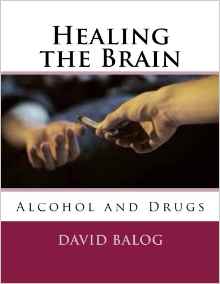Seattle-focused study suggests earlier intervention with depressed youths could reduce rate of cannabis-use disorder
- Summary:
- Young people with chronic or severe forms of depression were at elevated risk for developing a problem with cannabis in later adolescence, found a study looking at the cumulative effects of depression in youth.
- Share:
FULL STORY
A study looking at the cumulative
effects of depression in youth, found that young people with chronic or
severe forms of depression were at elevated risk for developing a
problem with cannabis in later adolescence.
Researchers used data
from annual assessments when students were ages 12-15 and then again
when they were 18. The results were published in the journal Addiction.
"The findings suggest that if we can prevent or reduce chronic depression during early adolescence, we may reduce the prevalence of cannabis use disorder," said lead author Isaac Rhew, research assistant professor of psychiatry and behavioral sciences at the University of Washington School of Medicine.
According to researchers, during the past decade cannabis has surpassed tobacco with respect to prevalence of use among adolescents. Cannabis and alcohol are the two most commonly used substances among youth in the United States. They pointed to one national study showing increases in prevalence of cannabis use disorder and alcohol use disorder in the United States, especially among young adults.
Longitudinal studies looking at the link between depression and later use of alcohol and cannabis, however, have been mixed. Some show a link. Others don't. But most studies have assessed adolescent depression at a single point in time -- not cumulatively, said the researchers. Further, there have been differences in how substance use has been measured ranging from the initiation of any use to heavier problematic forms of use.
The study oversampled for students with depressive and/or conduct problems. The researchers were surprised to see that the prevalence of cannabis and alcohol use disorder in this study was notably higher than national estimates with 21 percent meeting criteria for cannabis use disorder and 20 percent meeting criteria for alcohol use disorder at age 18.
What effect the easing of marijuana laws in Washington state had on the youth is unclear. Researchers said it would be informative to conduct a similar study in a state with more strict marijuana laws to understand whether the relationship between depression and cannabis misuse would still hold in areas where marijuana may be less accessible.
"The findings suggest that if we can prevent or reduce chronic depression during early adolescence, we may reduce the prevalence of cannabis use disorder," said lead author Isaac Rhew, research assistant professor of psychiatry and behavioral sciences at the University of Washington School of Medicine.
According to researchers, during the past decade cannabis has surpassed tobacco with respect to prevalence of use among adolescents. Cannabis and alcohol are the two most commonly used substances among youth in the United States. They pointed to one national study showing increases in prevalence of cannabis use disorder and alcohol use disorder in the United States, especially among young adults.
Longitudinal studies looking at the link between depression and later use of alcohol and cannabis, however, have been mixed. Some show a link. Others don't. But most studies have assessed adolescent depression at a single point in time -- not cumulatively, said the researchers. Further, there have been differences in how substance use has been measured ranging from the initiation of any use to heavier problematic forms of use.
The study oversampled for students with depressive and/or conduct problems. The researchers were surprised to see that the prevalence of cannabis and alcohol use disorder in this study was notably higher than national estimates with 21 percent meeting criteria for cannabis use disorder and 20 percent meeting criteria for alcohol use disorder at age 18.
What effect the easing of marijuana laws in Washington state had on the youth is unclear. Researchers said it would be informative to conduct a similar study in a state with more strict marijuana laws to understand whether the relationship between depression and cannabis misuse would still hold in areas where marijuana may be less accessible.
Story Source:
Materials provided by University of Washington Health Sciences/UW Medicine. Original written by Bobbi Nodell.

No comments:
Post a Comment